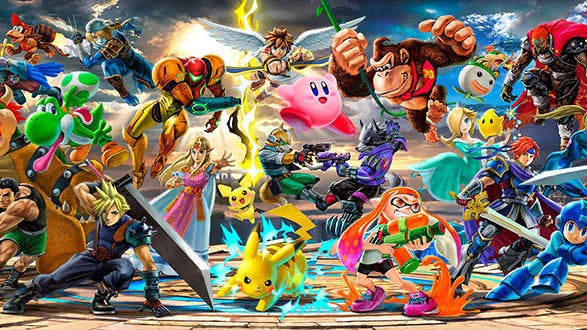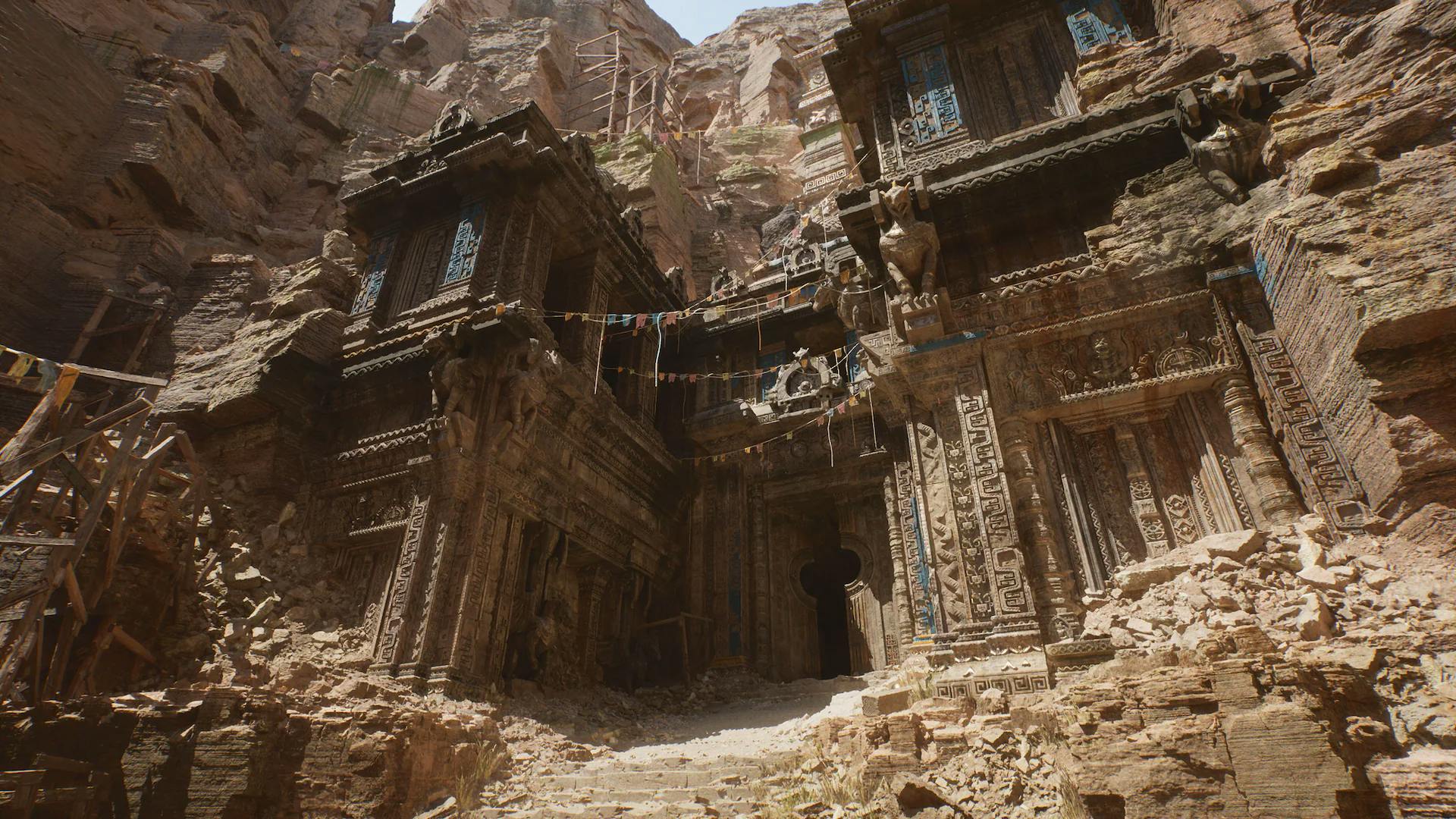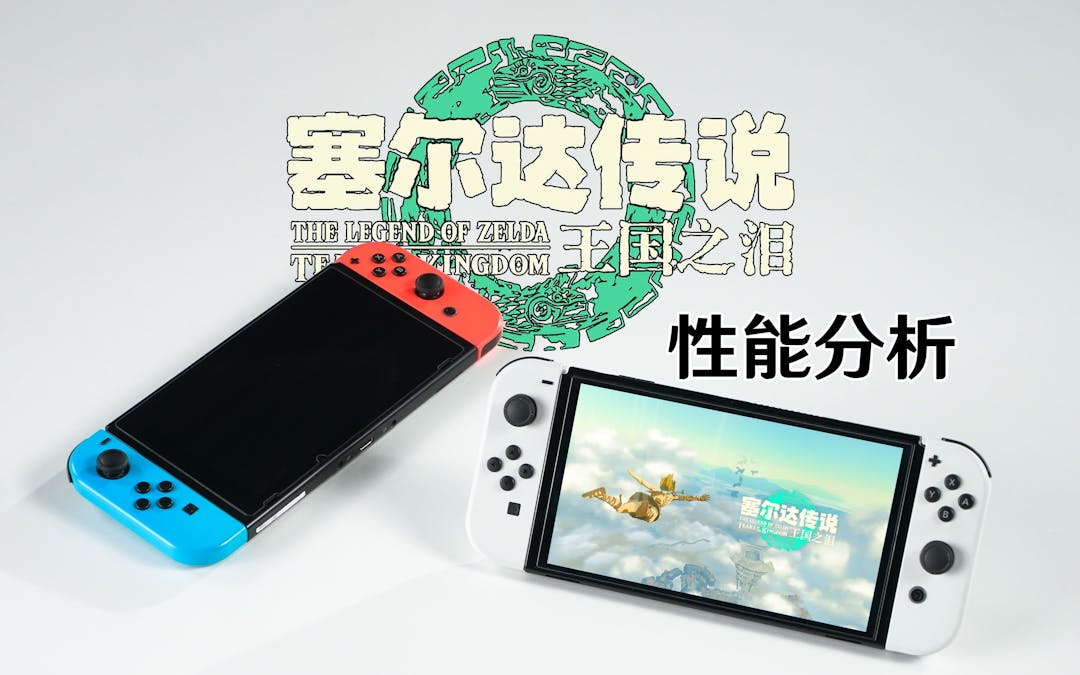Tears of the Kingdom: End of an Era
The Legend of Zelda: Tears of the Kingdom has been released. As the official sequel to Breath of the Wild, Nintendo once again demonstrated amazing design and meticulous polish, re-enacting the classic hero-saves-princess story on the land of Hyrule, and becoming the universally acclaimed game of the year.

What's surprising is that this massive open-world game can only run on 10-year-old hardware. It has no ray tracing technology, nor 4K high frame rate performance. However, with Nintendo's solid game development skills, they successfully gave the entire gaming industry a lesson.
Switch: Ten-Year-Old Hardware That Sold Over 100 Million Units
The Switch is a gaming handheld released by Nintendo in 2017, about 7 years ago now. At that time, Nintendo chose to cooperate with NVIDIA, adopting NVIDIA's Tegra X1 chipset as the Switch's core processor. This chipset was actually released in 2015, so it can be said that the hardware performance of the Switch handheld we currently have is equivalent to about 10 years ago.
The Tegra X1 chip is equipped with 4 A57 cores and 4 A53 cores, the same as the Snapdragon 810 processor released in 2014. This reminds us of the phones from that era: LeEco Le Max, OnePlus 2, Xiaomi 5...
Those phones from back then have long become history. However, the Switch has maintained strong sales momentum, reaching the astonishing figure of 125 million units sold. As of now, Switch sales have exceeded the combined sales of Xbox Series X and PlayStation 5, showing Switch's unique position and lasting influence in the gaming market.

Console sales comparison by quarter
Games Are the Moat of Gaming Consoles
Microsoft's Xbox and Sony's PlayStation are Nintendo's main competitors, and they have been competing fiercely in the gaming hardware market. Microsoft and Sony pursue high-performance gaming consoles with stronger processing power, higher resolution, and more realistic graphics. However, Nintendo chose a different path, focusing on creating unique and innovative game content rather than pursuing the highest technical standards. Although Xbox and PlayStation crush the Switch in technical specifications and hardware performance, Nintendo won players' hearts through unique gaming experiences, excellent game libraries, and outstanding game production.
During the Switch's lifecycle, many games achieved tremendous success, so much so that even non-gamers have heard of them to some extent, such as Animal Crossing and Ring Fit Adventure. Additionally, Nintendo owns some of the most dazzling well-known IPs, such as Mario ("Super Mario"), Pokémon, and Kirby. These game series have established deep influence in players' hearts and brought widespread recognition to the Switch. The Switch built its moat as a gaming console with these excellent games. They not only made players crazy about them but also attracted more non-gamers to join the Switch ranks.

Nintendo's famous IPs
Next-Gen Game Development Is on the Wrong Track
With the rapid development of next-generation games, game development costs are soaring at an alarming rate. Achieving 4K resolution, High Dynamic Range (HDR) display, and creating realistic and detailed game worlds - all these technical requirements need enormous financial investment. While game models become more refined, character images more realistic, and scene details more vivid, these advances don't come cheap.
According to former Sony president's viewpoint, the development cost of a high-quality AAA game has risen from 150 million. This figure is enough to show the financial pressure faced by the game development field. There are many reasons for soaring game development costs, including continuous technological advancement, game engine development, increased team size, and rising marketing costs. With improved hardware performance, game developers need to invest more resources and effort to achieve higher quality games. Meanwhile, the advancement and increased complexity of game engines also lead to rising development costs. To meet players' expectations for more realistic and detailed game worlds, development teams have to invest more time and resources, which also drives up game development costs.

Unreal Engine 5 graphics demo. It far exceeds Nintendo games' graphics quality, but the cost is also staggeringly high.
The main contradiction in next-generation game development is that hardware technological advancement exceeds the growth in game development productivity. Although hardware technology continues to improve, providing higher graphics rendering capabilities and computing power, game development productivity hasn't grown synchronously. This makes it challenging for developers when designing next-generation games, as they need to invest more resources and time to meet higher quality requirements. Some of the most important factors, such as game mechanics, guidance design, art style, and gameplay, haven't received the attention they deserve.
Nintendo's Tears of the Kingdom conveyed an important lesson to the gaming industry: even on ten-year-old hardware, it's possible to create the game of the year. Truly exciting storylines and highly creative gameplay mechanisms in games are far more important than improvements in graphics quality.
Nintendo Must Also Move to Next-Gen
Although I gave Tears of the Kingdom extremely high praise, even considering it a model for the gaming industry, it's undeniable that due to the Switch console's limited performance, Tears of the Kingdom's performance should have exceeded current levels.

塞尔达王国之泪性能分析:被Switch机能拖累的神作!
极客湾Geekerwan
任天堂第一方大作——塞尔达传说:王国之泪已经上线啦!但Switch的机能已经不太够用啦,这台过时掌机真的能跑动王国之泪吗?我决定做一些分辨率和帧率测试分析,一起来看看吧!(无剧透)
According to calculations, Tears of the Kingdom renders at only 20 frames per second in complex scenes. Once the "Ultrahand" ability is activated, visible frame drops and stuttering become more likely. When using the "Ascend" ability, even passing through very close models forces a loading animation. Especially during combat, this seriously affects game continuity.
In developer interviews, the game producer mentioned that during the development of the predecessor Breath of the Wild, there were many ideas, but due to the performance limitations of the Wii U (Switch's predecessor console), these ideas couldn't be realized. By observing some abandoned design elements in the game, it's not hard to see that Tears of the Kingdom's design concepts were also affected by Switch performance limitations.
The Switch's storage capacity even affected the game's playability. Important main story missions have no voice acting, only simple dialogues like "ah," "oh," "eh," etc. This is due to Nintendo's cartridge capacity limit of 16GB. The underground map's plainness is very likely also due to game capacity limitations.
As a giant in the gaming industry, Nintendo needs to move toward next-generation, launching more powerful gaming consoles to realize more complex game worlds. At the same time, larger storage capacity will also allow developers to create richer, more innovative game content.
How Should Next-Gen Games Be Made
By 2023, we've long entered the so-called "next generation." The improvement in hardware computing power has brought huge progress to human society, with technologies like AIGC greatly liberating productivity. However, despite hardware performance improvements, regrettably this hasn't made games more interesting. This is an issue the gaming industry needs to reflect on.

It's been 10 years since GTA V was released in 2013
Hardware advancement has indeed led to rising game development costs. However, simply pursuing realism isn't the only goal for making games more interesting. Using the advantages of hardware advancement to liberate game developers from tedious development processes, allowing them to focus more on improving gameplay - this is the key to correctly developing next-generation games.
Hardware advancement should be used more to improve game development productivity. Through technologies like ray tracing, lighting development difficulty can be reduced; frame interpolation and super-sampling can reduce modeling costs; and using AIGC technology can enhance game richness.

RTX-optimized ray tracing graphics. Can you tell this is a game screenshot?
Although technological advancement can bring stunning graphics and realistic physics effects, game enjoyment doesn't depend solely on these aspects. A successful game needs to comprehensively consider multiple elements, including creative gameplay mechanisms, engaging storylines, deep character development, and interactivity with players. While advancing technology, we cannot ignore the importance of game enjoyment and core elements. Only by combining technology with gaming experience can we create truly delightful and memorable game works.
As for Tears of the Kingdom, it can be said to be the closing work of this generation. It has squeezed out all of the Switch's capabilities and is this old machine's final farewell performance. I look forward to decades from now, on one of Nintendo's more powerful gaming consoles, leaping from the sky islands with all my senses and descending onto the vast land of Hyrule, wielding the Master Sword and beginning another hero's trial.
© LICENSED UNDER CC BY-NC-SA 4.0
